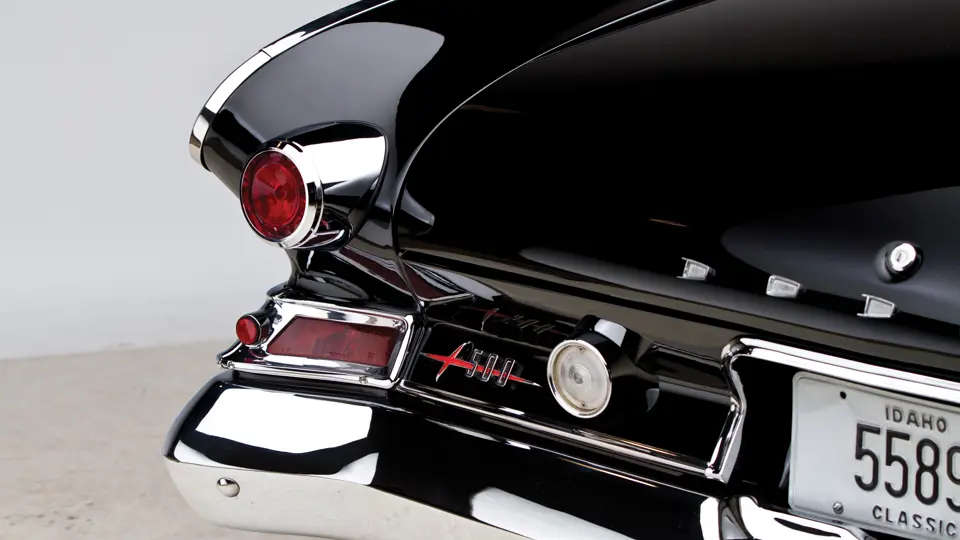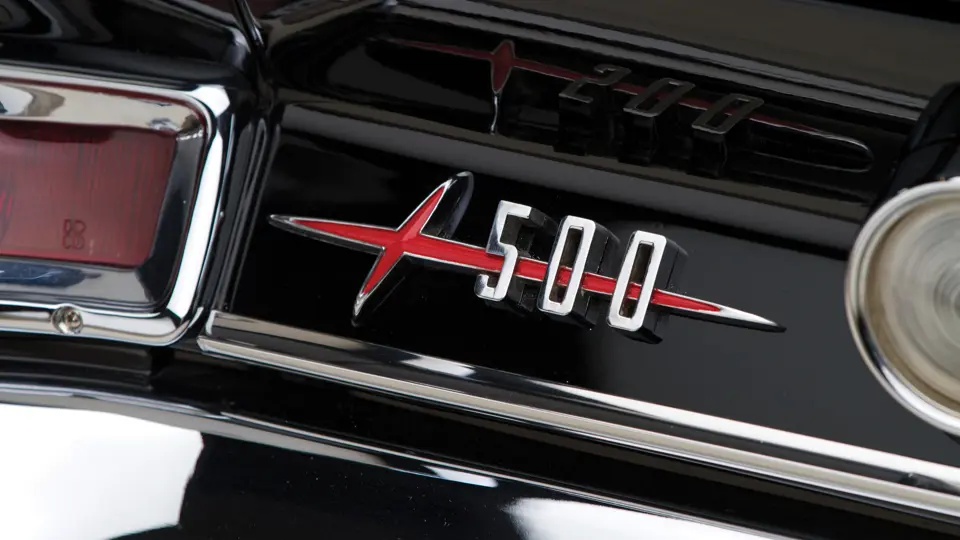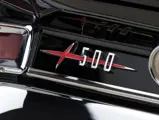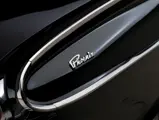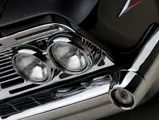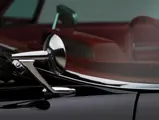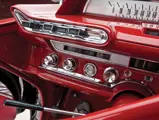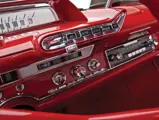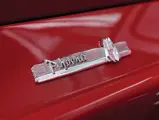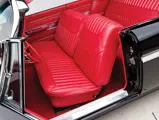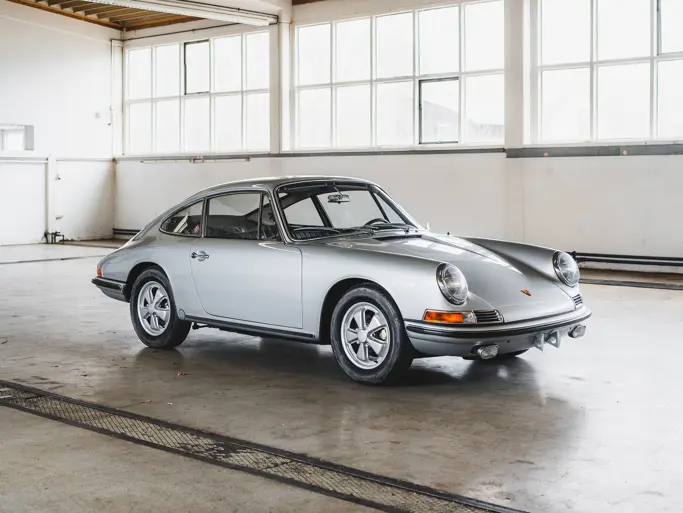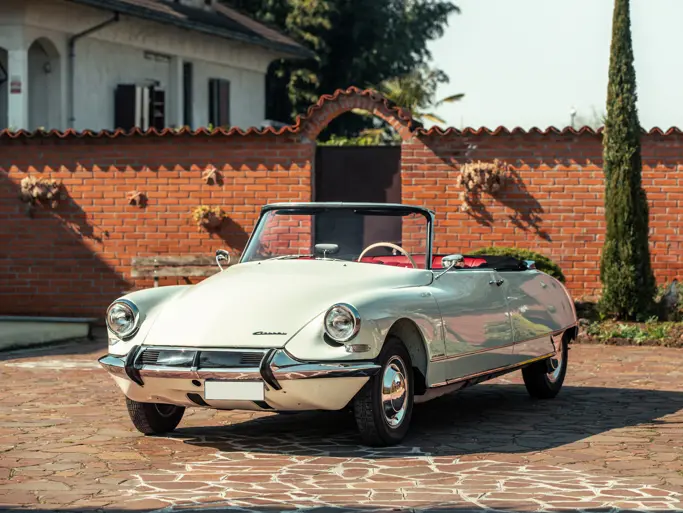Model RD4. 330 bhp, 383.0 cu. in. OHV V-8 engine, three-speed Torqueflite automatic transmission, torsion bar independent front suspension, live rear axle with semi-elliptic leaf springs, and four-wheel hydraulic drum brakes. Wheelbase: 118.0 in.
In 1960, Chrysler Corporation granted Dodge and Plymouth a divorce. No longer would the two makes have to share showroom space, although poor Plymouth would still have to share space at DeSoto and Chrysler dealers. But Dodge would have display space all of its own. Since Plymouth had appealed to a less affluent buyer than Dodge—the cheapest of which sold for $350 more than a Plymouth—the departure of Plymouth also represented the loss of some floor traffic. The answer was the Dart, a Plymouth-sized and priced Dodge, just $18 more than a Plymouth Savoy.
And not just one Plymouth-sized Dodge; there were three models, the Dodge Dart Seneca, the Dodge Dart Pioneer, and the Dodge Dart Phoenix, all on the 118-inch Plymouth wheelbase and selling at Plymouth prices. (Dart station wagons shared the big Dodge’s 122-inch chassis.) Darts came as sixes and V-8s and sold from $2,278 to $2,988, the latter for the top-of-the-line Phoenix convertible. They could also be ordered with 361 or 383 cubic inches, or even the 330 brake horsepower cross ram induction 383. Understandably, few were.
The Dodge Dart seems not to have hurt Plymouth though, since both makes saw sales increase in 1960, a year that saw 1.1 million more sales in the industry overall. But some makes fared better than others, and Rambler managed to knock Plymouth from third place.
Dart, like the full-size Dodge, shared all of Chrysler Corporation’s advances for 1960, with the unit-body construction chief among them. There were two choices of automatic transmissions, the Powerflite with two speeds or the Torqueflite with three, and power steering, power brakes, power seats, and air conditioning were also available.
The Dart returned for 1961 with the same array of models, but the bodies were re-styled with sculptured fins. The grilles were now concave, with the quad headlights inset at the outer edges. The 12-volt alternator, pioneered on the 1960 compact Valiant, was extended to all Chrysler products. The Dart convertible, only ever available in the Phoenix series, was now sold with V-8 only. Industry sales, however, were off a bit, and the Dart even more so. A new Lancer model, the companion to Plymouth’s Valiant, no doubt took some of those sales.
This striking ’61 Dart Phoenix Convertible Coupe comprises a rare combination of options, or rather lack of them. It has no power assists whatsoever, save for the Torqueflite transmission. There is no air conditioning, just an AM radio. Under the hood, however, is a sight seldom seen on a Dodge Dart: a 383-cubic inch wedge engine with the 330 brake horsepower cross ram induction. The customer filling in the order sheet knew exactly what he wanted. With 330 horsepower in a 3,580-pound car, he had, knowingly or not, created the first muscle car. When it arrived in 1964, the Pontiac GTO’s power-to-weight ratio was only fractionally better. This car’s lack of options, like the later Road Runner, helped maintain performance by keeping the weight down.
An excellent restoration, this car is painted in black, which Dodge called “Midnight.” The paint is excellent, as is all the brightwork. The interior is done in red pleated vinyl and looks brand new. Matching red carpet covers the floor. A black vinyl top is fitted with a red vinyl boot cover.
The engine compartment is very clean and correctly detailed. It has dual Carter four-barrel carburetors that are fitted with correct oval air cleaners. The underbody is painted with a textured finish. The wheels, with whitewall tires and unusual Dodge spinner wheel covers, complete the presentation.
Dodge did not promulgate production figures for individual body styles, so it’s hard to gauge just how rare this car is. Its lack of options suggests that few others were built this way. In any case, its remarkable specification guarantees its performance, and its mild-mannered appearance means it will surprise almost everyone.




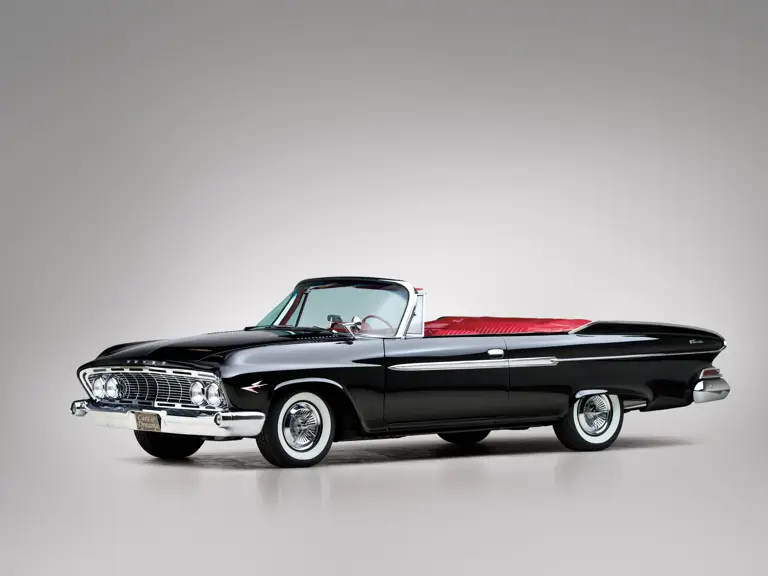




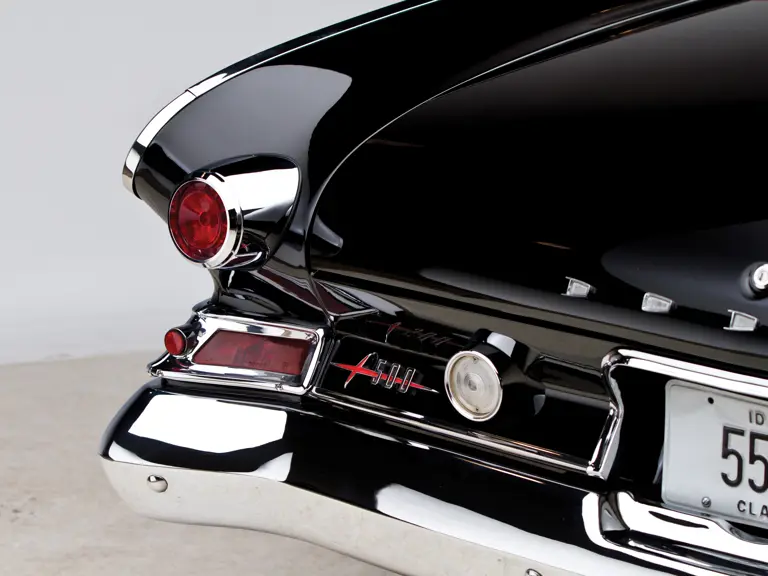


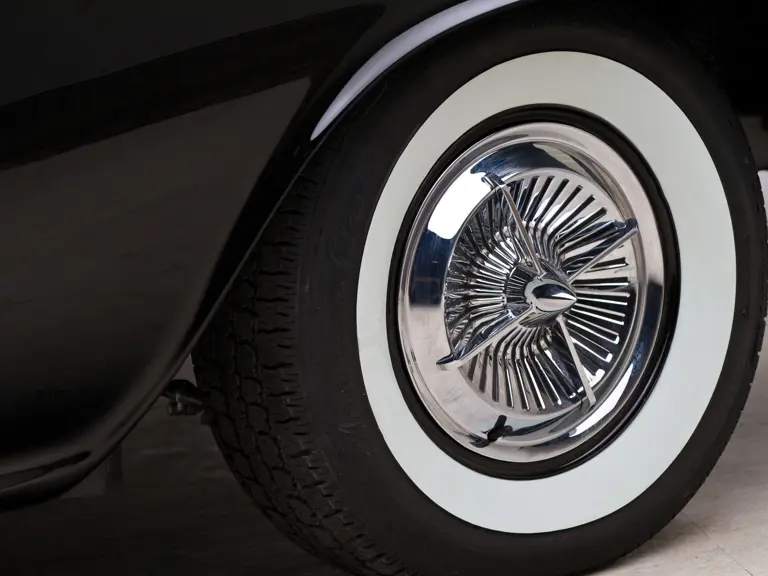

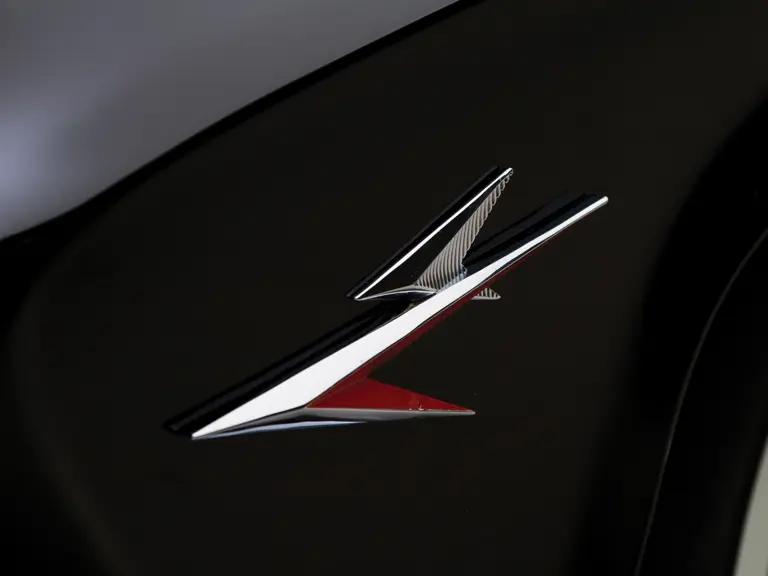




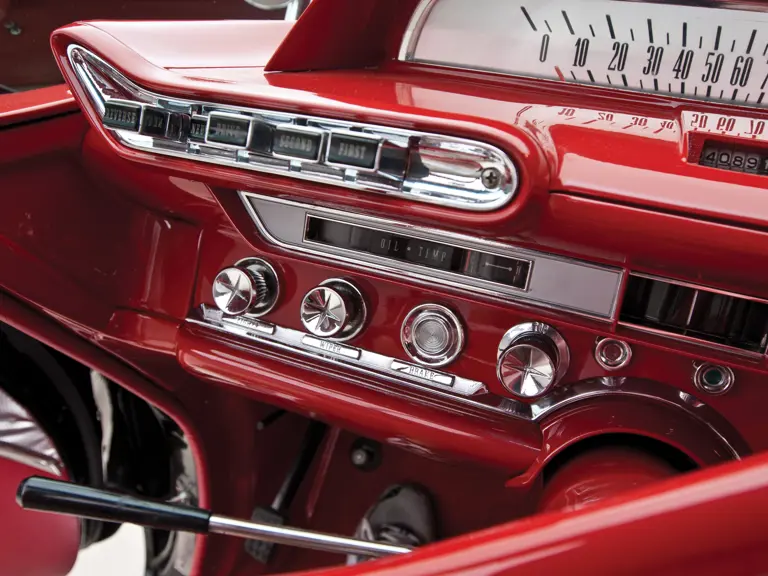


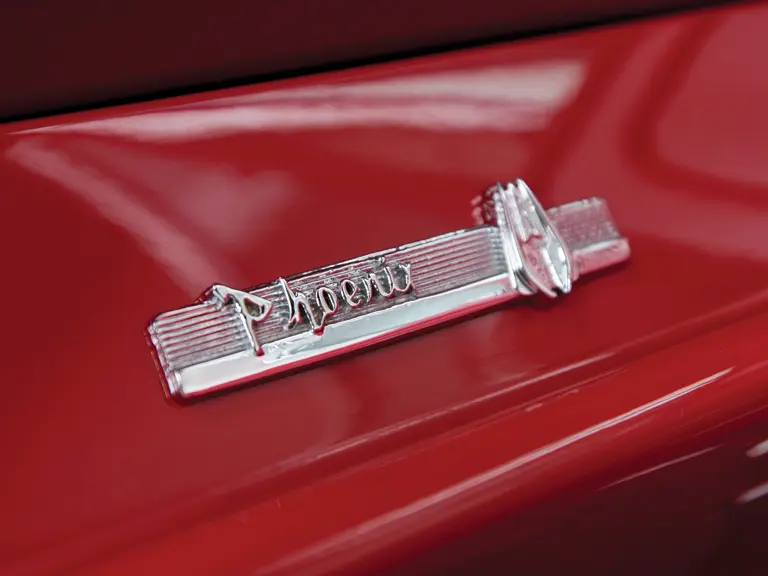

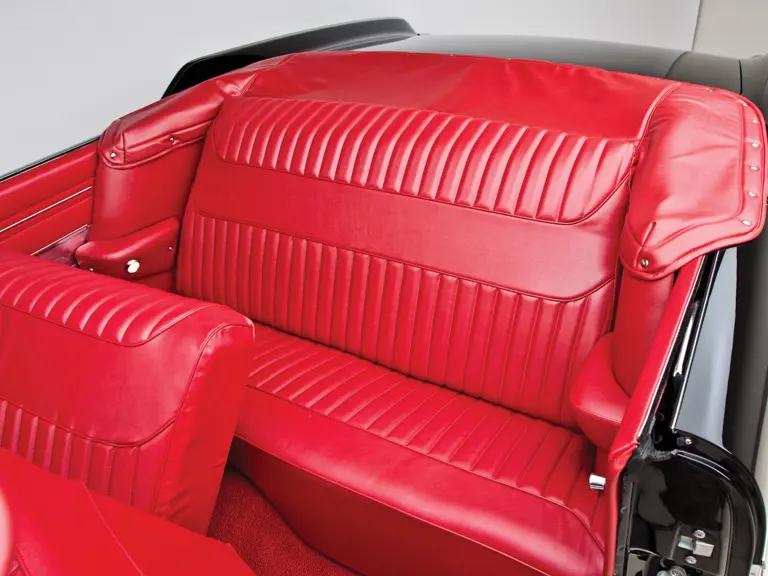



 | North Palm Beach, Florida
| North Palm Beach, Florida

